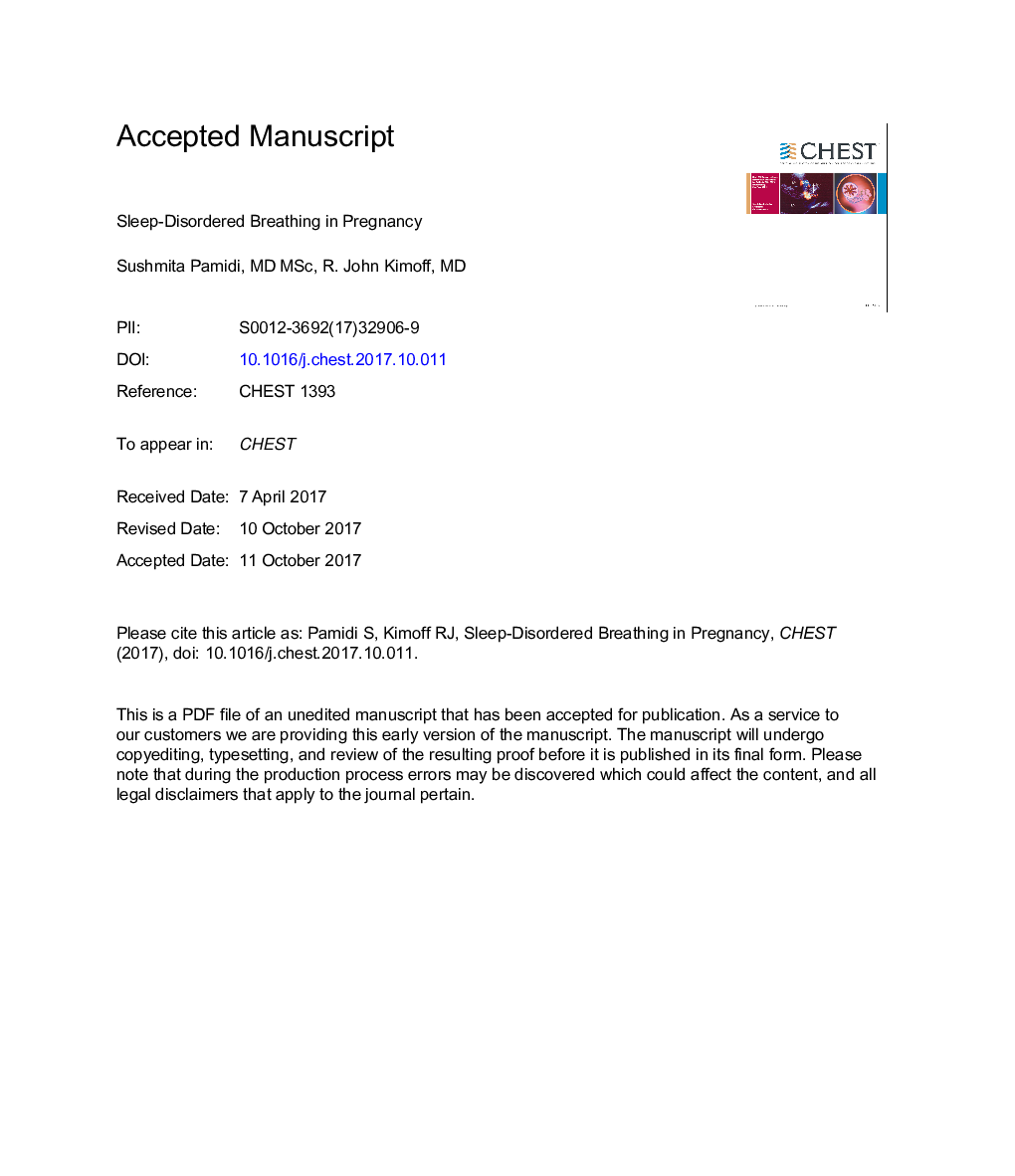| Article ID | Journal | Published Year | Pages | File Type |
|---|---|---|---|---|
| 8657944 | Chest | 2018 | 36 Pages |
Abstract
Emerging literature suggests that sleep-disordered breathing (SDB) worsens over the course of pregnancy and is associated with adverse maternal and fetal outcomes. Earlier studies, using mainly snoring as a surrogate marker for SDB, have shown an increase in the prevalence of SDB during pregnancy compared with that in the pregravid state. More recently, prospective observational studies in which the investigators ascertained SDB by using complete polysomnography have shown a prevalence ranging from approximately 17%Â to 45%Â in the third trimester. Pregnancy itself can be associated with daytime hypersomnolence, so complaints of increasing fatigue and sleepiness during pregnancy are not specific for SDB. Moreover, snoring in isolation also has relatively poor sensitivity and specificity as a screening tool for diagnosing maternal SDB. The indications for screening for SDB during routine obstetric prenatal visits are still unclear, but observational studies indicate that maternal SDB is linked with the development of adverse pregnancy outcomes, such as gestational hypertension and gestational diabetes mellitus. Some studies also have identified a relationship between maternal SDB and the delivery of infants who are small for gestational age. Aside from a few small interventional studies of CPAP in pregnant patients with gestational hypertension, little currently is known about whether treatment of SDB during pregnancy improves clinical outcomes for the mother and/or baby. Additional current knowledge gaps include elucidating underlying mechanisms of maternal SDB, determining optimal treatment strategies, and understanding the trajectory of SDB after delivery.
Keywords
Related Topics
Health Sciences
Medicine and Dentistry
Cardiology and Cardiovascular Medicine
Authors
Sushmita MD, R. John MD,
